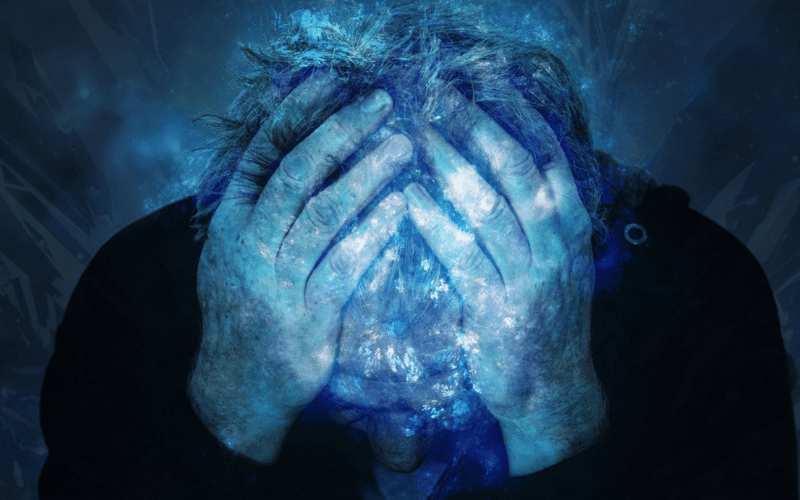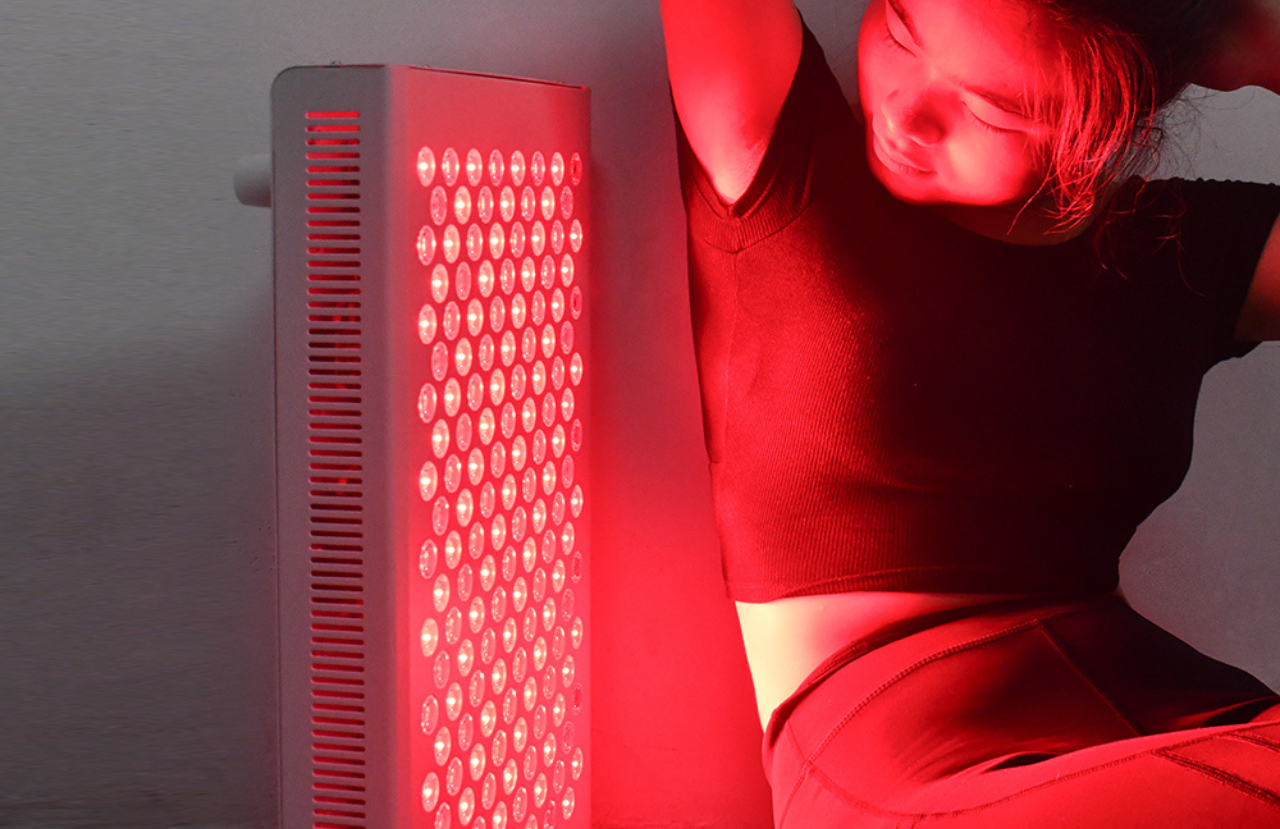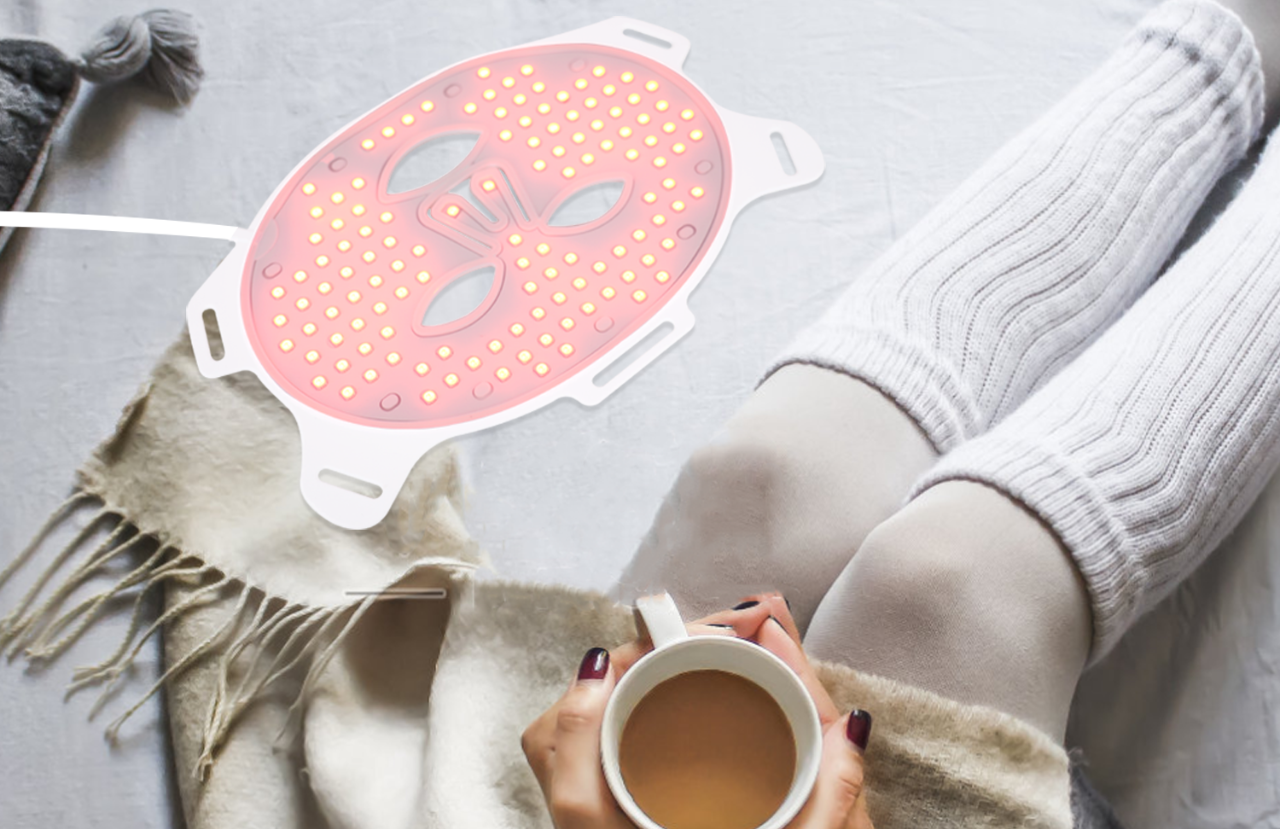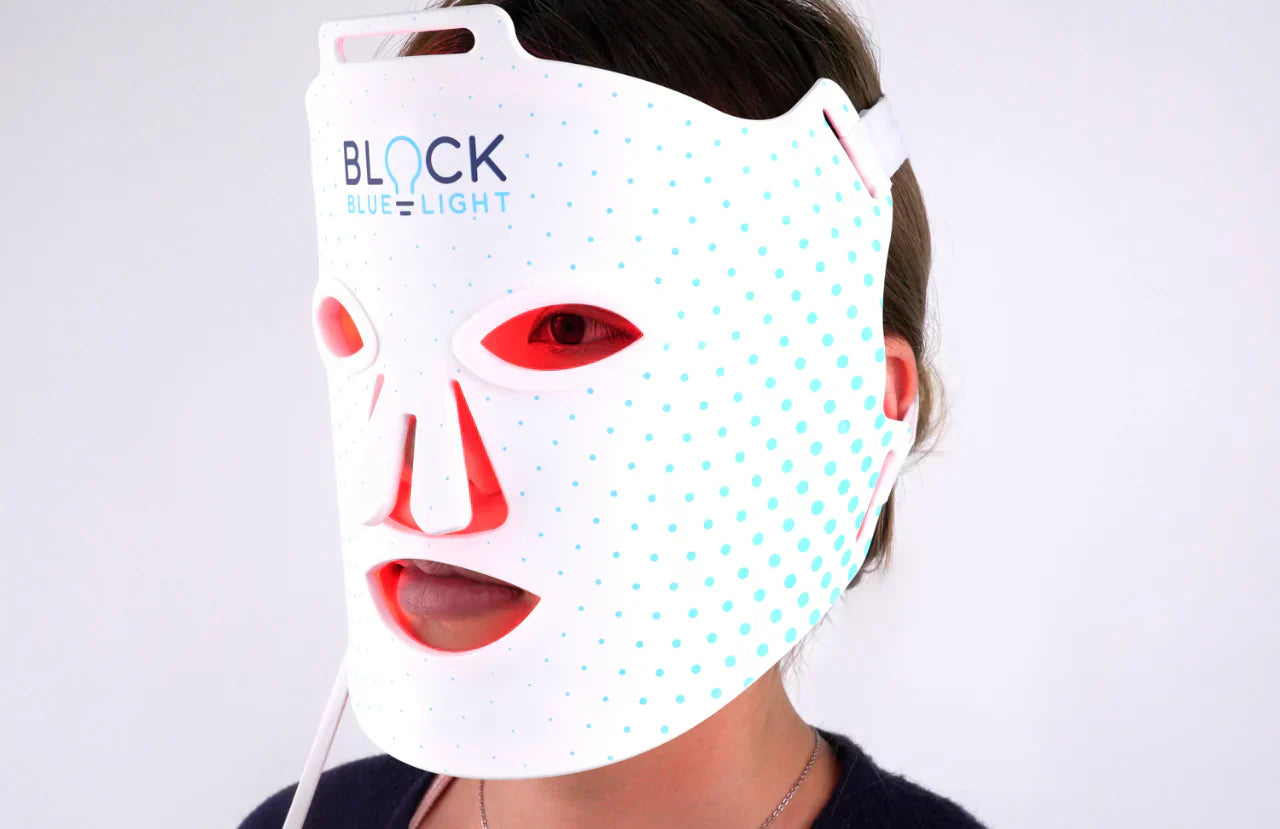So you’re a migraine sufferer, and feel like you’ve tried a million different prevention options?
Did you know that your light bulbs, light sensitivity, and exposure to blue light - could be triggering your attacks?
In this article, we break down what you need to know about blue light headaches, and how you can protect yourself from those annoying migraine headache attacks.
Migraine Headache Triggers
Headaches are surprisingly common. The World Health Organisation stated that roughly 50% of the population suffers from headaches.¹ It’s a staggering figure!
A headache disorder encompasses both a headache and migraines.
The difference between a headache and migraines is that a headache may come and go and tends to be way more common. However, a migraine is a common recurring chronic condition, and they tend to be a lot more intense than a headache.
Symptoms of headache disorders may include pain in the shoulders, neck, and head. Along with a variety of other symptoms such as nausea, vomiting, sensitivity to light (photophobia) and sound, eye irritation, and impaired vision.
Doctors have suggested that certain things can make you more prone to headache disorders such as; being female, genetics and family history, mental health disorders, and sleep disorders.
But, did you know that many environmental factors can trigger migraine attacks?
Migraine And Headache Triggers Can Include:
- Foods, drinks, and additives (including caffeine and cheese)
- Perfume
- Cigarette smoke
- Exposure to blue light, blue light sensitivity, and electronics
- Stress
- Depression, anxiety, or mood disorders
- Lack of sleep, or sleep disorders
- Hunger, or dehydration
- Alcohol or drug consumption, and medicines
- Hormonal changes, which can be induced for a wide variety of reasons (stress, menstruation, menopause, pregnancy, etc)
Sometimes the effects of migraines can result in an impairment of lifestyle, and the ability to carry out day-to-day tasks.
Retinal migraine, also known as ocular migraine, is characterized by reduced flow to the blood vessels behind the eyes. Although ocular migraines are rare, they come with an unpleasant visual symptom that results in blind spots (usually in one eye) which makes it impossible to drive or even read.
These visual disturbance symptoms can also arise with a visual migraine, also known as a migraine aura. However, you will find that with a migraine aura the visual impairments are found in both eyes, rather than one. Symptoms tend to be a lot shorter in migraine aura, and usually pass within 30 minutes.
The causes of both ocular migraine and visual migraine are thought to be caused by the same triggers as normal headaches and migraines.
Please visit your trusted health care professional if you start experiencing serious impairments such as blind spots in your vision with your headache symptoms.

What Is A Blue Light Headache?
Blue light is everywhere within the world, it is reported that one-third of all light is ‘blue light’.
The sun is the largest natural emitter of blue light - because this is how our circadian rhythm is managed by our environment. Blue light from the sun allows our body to know when we should go to sleep, and when we should be getting up.
Of all light on the visible light spectrum, blue light has the shortest wavelength and has the most energy. Other than the sun, blue light is emitted from electronic fluorescent light sources such as light bulbs, computers, laptops, smartphones, tablets, and televisions.
Overexposure to blue light has been proven to cause a variety of health issues from hormone disruption to sleep disorders.⁷
And though headaches can have a multitude of causes, clinical research shows that digital eye strain (also known as computer vision syndrome) is experienced by roughly 50% of computer users, which includes the use of tablets, smartphones, and laptops.³
Considering the prolific use of technology in our modern world, this figure is quite important for the maintenance of general health, and eye especially eye health.
The American Optometric Association states that the most common symptoms found in those with digital eye strain (DES) are headaches, dry eye, eye strain, visual disturbance, tired eyes, eye pain, blurred vision, and pain in the head, neck, and shoulders.
So you could very well find that the blue light sources in your home are contributing to digital eye strain symptoms - such as headaches.
And that limiting your exposure to blue light could seriously benefit your symptom of a migraine attack.
Luckily, you can protect yourself from digital eye strain and blue light during the day with our Yellow Lens DayMax Glasses. Our specialized yellow lens glasses offer protection against the blue light spectrum and maximum protection against unnecessary blue light from LED and fluorescent lighting.

Our DayMax migraine glasses are perfect for those suffering from migraines, or if you work in an office exposed to high levels of blue light from technology.
The revolutionary filtering technology of our yellow lens glasses especially targets blue light in the harmful lower nanometers to ensure that your circadian rhythm is supported.
By limiting unnecessary exposure to digital eye strain and blue light, you can reduce your risk of a painful migraine attack.
Does Blue Light Affect Migraines?
Whilst more in-depth research is required in the field of migraines and blue light, the current research is showing positive results between blocking blue light and decreased symptoms of digital eye strain and migraine symptoms.⁴
UC Davis University notes that because blue light scatters most easily, it can contribute to digital eye strain, and its symptoms such as headaches.⁶
Researchers have found that migraine attacks are particularly more painful for migraine patients with the presence of blue light, in comparison to red light, and that blocking blue light could significantly reduce the experience of light-sensitive symptoms (photophobia) and pain during migraines.⁵
By taking the easy steps of reducing your exposure to unnatural blue light, you could help to prevent or decrease your painful and unwanted symptoms of headaches.
To increase your protection against blue light headaches, combine our Yellow Lens DayMax Computer Glasses with our blue light blocking light bulbs. Our bespoke lightbulbs are specially crafted in different styles and for different situations to offer you all-around protection from those unwanted headaches.
Not only do our blue light blocking light bulbs protect your eyes during the night time, they holistically support your circadian rhythm, and hormones to ensure overall support against migraines.
Can Blue Light Glasses Stop Headaches?
Whilst the blue light filter of tinted lenses that come with blue light glasses can help to reduce a migraine trigger...
The easiest way to prevent over-exposure to blue light is to change the light bulbs within your home, rather than to just opt for blue light glasses.
There are many sources of blue light within the home, and not only could it be affecting your headache disorder pattern, but it has also been proven to affect a myriad of other healthy biological functions that could be contributing to your tendency to suffer from migraines.
Research does show the effectiveness of using blue light glasses to reduce symptoms of digital eye strain.⁴ However considering your exposure as a whole is a much more effective strategy to reduce your blue light exposure than just wearing blue blocking glasses.
We offer a range of products such as high-quality blue light blocking glasses, and blue light blocking light bulbs - so that you can efficiently reduce your blue light exposure.
How To Get Rid Of Blue Light Headache And The Health Effects Of Blue Light
The issue with artificial blue light is that there is a myriad of ways it can be affecting your vulnerability to chronic migraine attacks. Suffering from migraines is not only uncomfortable due to the accompanying chronic pain, but it can also affect your ability to lead a normal happy life.
It is particularly common for those who experience headache disorders to not be able to work, and have to migrate to a dark bedroom away from bright light until the headache pain or migraine subsides.
This is not ideal for most human beings who also have many duties and responsibilities such as kids, and work!
Unfortunately, despite headache disorders being so common - there is no cure. However, there are recommendations and lifestyle changes that you can make which can minimize your risk of getting a migraine attack.
The usual protocol is the take over-the-counter medication, or embark on lifestyle changes to reduce your possible triggers.
However, migraine medication isn’t necessarily a fool-proof long-term answer, and it’s certainly not ideal for those who experience nausea and sickness with the onset of a chronic headache!
But by eliminating over-exposure to blue light - you can reduce your environmental and biological risks which contribute to headaches and migraine pain.
Research shows that over-exposure to blue light can affect melatonin levels, and whilst this may not seem initially relevant to headaches - it surprisingly is.⁸
Melatonin is the hormone responsible for a healthy sleep-wake cycle, and hormone disruption and a lack of sleep are triggers for migraines.
Stress commonly results in tension headache symptoms, so our ability to properly unwind and rest at the end of the day due to blue light exposure - can massively affect our susceptibility to headaches.
Stress can also affect our sleep-wake cycle, and disrupt hormones - again all leading back to probable causes of migraine attacks.
Luckily you do have options to minimize your risk by protecting yourself from blue light exposure - which in turn benefits your general holistic health. Therefore reducing your chances of suffering from a painful migraine attack.
By incorporating yellow lens glasses into your daytime routine, and backing up with blue light blocking light bulbs at home - you can holistically protect yourself from blue light headaches during the day and night.

Conclusion
Although migraine attacks can have a multitude of different sources, and individuals are triggered by different things.
Blue light is a common thread which ties neatly into many of the triggers of headaches.
Our recommendation is to consider switching the fluorescent lighting within your home to lightbulbs that block blue light and wear yellow lens glasses to minimize the risk of digital eye strain and headaches.
We also hold a range of different suitable blue-blocking lighting products from lamps, to red night lights - which can help you to get a good night's sleep, balance your hormone regulation and reduce stress.
Sources:
- https://www.who.int/news-room/fact-sheets/detail/headache-disorders
- https://www.medicalnewstoday.com/articles/324890#migraine
- https://www.ncbi.nlm.nih.gov/pmc/articles/PMC6020759/
- https://pubmed.ncbi.nlm.nih.gov/31824984/
- https://www.ncbi.nlm.nih.gov/pmc/articles/PMC6879998/
- https://health.ucdavis.edu/health-news/newsroom/is-blue-light-from-your-cell-phone-tv-bad-for-your-health/2019/05
- https://www.ncbi.nlm.nih.gov/pmc/articles/PMC5703049/






